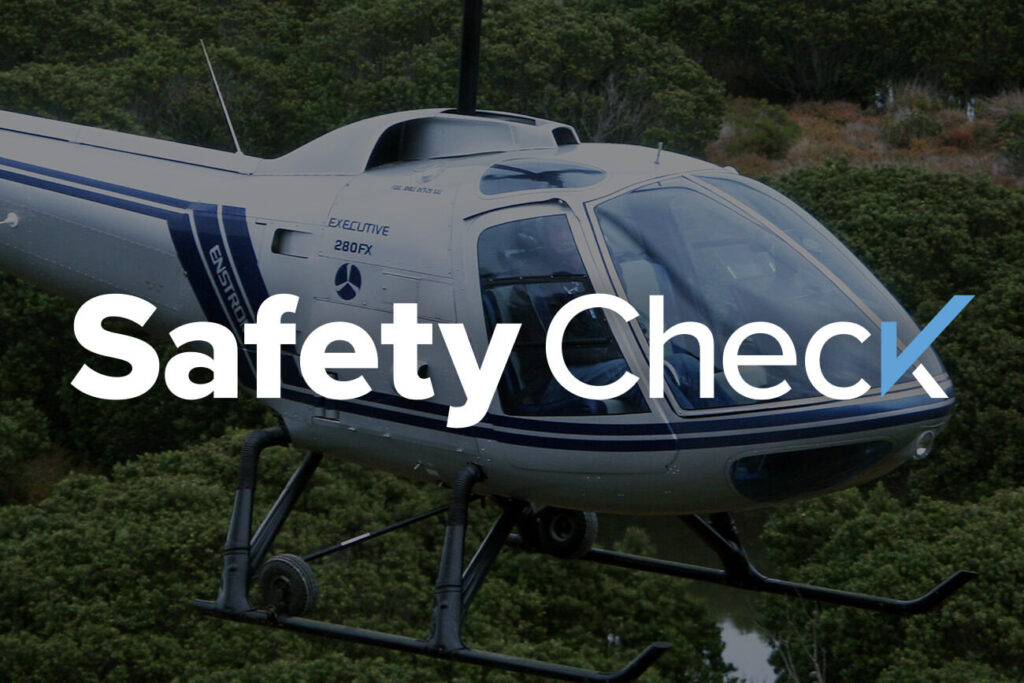Safety Check: Hello Dolly

Moving a helicopter after it shuts down can be a cumbersome task, which a helicopter dolly can help simplify, turning it into a one-person job.
I frequently utilize an old dolly the Indiana State Police left behind at Goshen Municipal more than 20 years ago. But just because a dolly or moveable platform is available does not mean that it should be your first choice to land on. For inexperienced pilots, landing on a dolly can be especially difficult or even dangerous.

I reached out to some of my pilot friends for their perspective on whether the added convenience of a dolly is worth the added risk. We also talked about ways that you as a pilot can help mitigate that risk.
Chris Houser, an experienced Enstrom flight instructor, said he loves landing on moveable platforms. As a former air medical pilot, he’s accustomed to dolly operations and applies that experience to landing his company’s Bell 429 on a remote-controlled, lighted Heliwagon. But even with his years of practice, Chris still acknowledges the risk of misjudging the skids’ position relative to the dolly, which could result in a catastrophic dynamic roller.
Chuck Surack, Enstrom Owner and Founder of Sweet Helicopters in Fort Wayne, Indiana, does not permit any Sweet Helicopter pilots to land or take off from dollies. He doesn’t like the idea of flying away and leaving the dolly sitting outside. Surack told me he landed on dollies in his early days, but now champions other, less risky methods for relocating helicopters. Sweet Helicopters uses Chopper Spotter tugs for all its skid gear helicopters.
Jeff Schorsh, Director of Operations for Sweet Helicopters, echoed Chuck’s comments, adding that the shape and position of the dolly are important considerations. “Size matters, and bigger is better,” he said. The wheels of the dolly should be firmly secured and faced into the wind. Pilots should approach the dolly from behind and land from the same side they are seated to provide the best visibility. To complete the landing, Jeff recommended bringing the helicopter to a stable hover and slowly lowering onto the platform.
Dennis Martin, Enstrom’s Chief Commercial Officer, learned to fly from an instructor who loved training people to fly off dollies. He called his instructor, Wayne Breeden, something of a “dolly-ologist.” Martin said Breeden taught him to start from about 30 feet behind the dolly, 30° off to the right, and 3-4 feet above. From this position, Breeden would have Martin take a slow, steady approach and simultaneous descent. The goal would be to have zero forward airspeed and zero translation to the target on the dolly. If at any time the helicopter felt unstable, Martin would circle around and try it again.
The Enstrom factory in Menominee does not use dollies for flight tests because whatever convenience they might provide would be negated by the need of Enstrom technicians to work on the helicopter. If the rotorcraft were on a dolly, the five or six technicians would have to climb up and down it all day when they needed to make an adjustment.
Martin said, whenever the OEM reviews Enstrom accident reports, it is not uncommon to see dolly related incidents. Pilots rarely note injuries beyond a bruised ego, but the helicopters themselves could see significant damage.
Jason Cutter, founder of Venture Helicopters in Frankfort, Indiana, doesn’t like letting students or renters land on dollies. He said there’s no guarantee they have sufficient skill to do so. Cutter also drew attention to the height a dolly adds to a helicopter. Even a low-profile dolly would make it difficult for a helicopter to clear the top of his rented T-hangar.
If you are ever given the option to land on a dolly, know your limits and avoid over-controlling the helicopter. It requires your full attention and offers very little room for error.
A great way to practice is to bring a flight instructor along and rehearse landing inside a painted outline the exact size of the dolly you intend to use. If navigating this simulated dolly should prove a struggle, I would certainly avoid attempting to land on the real thing!
Fly safe.

Randy is a dual rated Airline Transport Pilot with 13,000 flight hours in airplanes and helicopters. He has type ratings in the BE400 and CE500. Randy has been a rotorcraft Designated Pilot Examiner representing the Grand Rapids FSDO since 2014. Currently he works for Sweet Helicopters, a northern Indiana Part 135 air carrier operator and serves as the Airport Manager of the Goshen Municipal Airport.
About Enstrom Helicopter
From Rudy Enstrom’s early designs in 1943 to initial testing in a Michigan Quarry in 1957 to aircraft operating on six continents, Enstrom Helicopter Corporation has maintained a reputation for safety, value and performance. Based in Menominee, Michigan and proudly made in the United States, Enstrom has a rich history for design innovation. The goal is to provide helicopters to the customer’s exact specification and deliver support and maintenance worldwide.